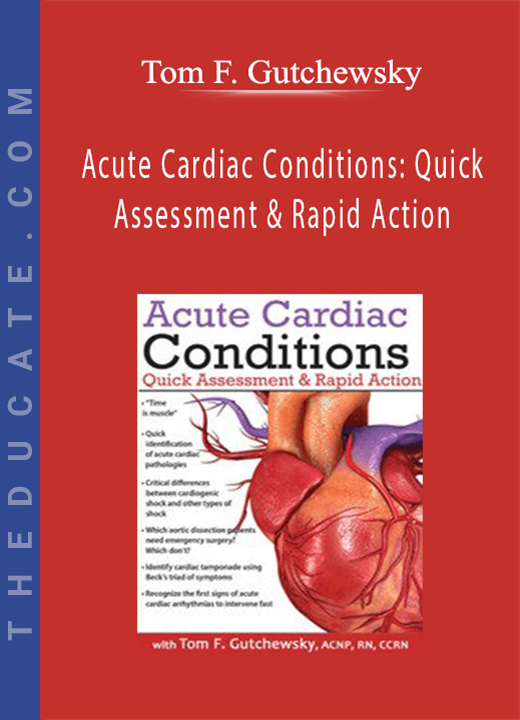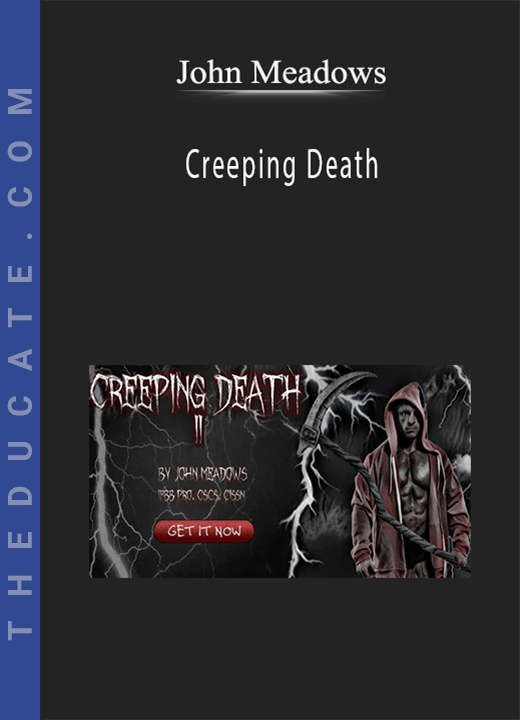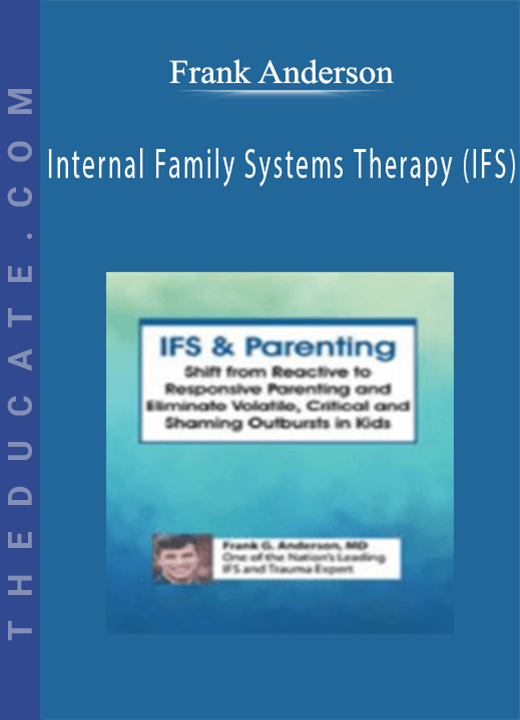Description

-
Tom F. Gutchewsky – Acute Cardiac Conditions: Quick Assessment & Rapid Action
- Faculty:
- Tom F. Gutchewsky
- Duration:
- Full Day
- Format:
- Audio and Video
- Copyright:
- May 11, 2017
- “Time is muscle”
- Quick identification of acute cardiac pathologies
- Critical differences between cardiogenic shock and other types of shock
- Which aortic dissection patients need emergency surgery? Which don’t?
- Identify cardiac tamponade using Beck’s triad of symptoms
- Recognize the first signs of acute cardiac arrhythmias to intervene fast
- Differentiate between an ST elevation MI and a non ST elevation MI
- What about the presentation based on different coronary vessel involvement?
- Review angiogram films to identify specific pathology including culprit vs. chronic lesions
- When are thrombolytics appropriate?
- When should an invasive procedure like angioplasty or stenting be performed?
- When to refer to surgery – including timing of urgent and elective surgery
- See the changes of acute MV regurgitation caused by myocardial ischemia on echocardiogram
- MR treatments: Pharmacology? When is it time for surgery or catheter-based interventions?
- Find out how an intra-aortic balloon pump can stabilize a patient with ventral septal defect caused by MI prior to surgery
- Review which drugs are most beneficial for specific conditions and adhere to AHA recommendations
- Understand the multiple causes of cardiogenic shock to identify early symptoms
- Compare the function of diagnostic techniques, including echocardiogram and swanganz catheters
- Gain insight into typical and more advanced treatments including fluid resuscitation, medication, interventions, intra-aortic balloon pumps, ECMO, and VADs
- Stanford types A and B – including common causes, which patients are at risk, and typical presenting symptoms
- Review diagnostic techniques and images including echocardiogram, TEE, and CT scans for pathological findings
- Which patients require emergency surgery vs. medical management?
- Explore the latest surgical techniques used in treatment
- Identify the symptoms of cardiac tamponade including the components of Beck’s triad
- Learn the causes of pericardial tamponade
- Review diagnostic echocardiogram and CT images
- Appropriate treatments including pericardiocentesis and pericardial window surgical procedures
- Identify acute cardiac arrhythmias including atrial fibrillation/flutter, 3rd-degree heart block and ventricular tachycardia by EKG findings
- Review common etiologies and risk factors
- Explore treatment options including medication, electricity, and ablation procedures
Description
You’re caring for a stable patient when suddenly she develops tachycardia and hypotension as well as complaints of pain. All are symptoms consistent with acute coronary syndrome, early shock, aortic dissection, tamponade, and various arrhythmias. Which is it?! Acute patient changes require quick assessment and rapid action.
With a thorough understanding of cardiac anatomy and physiology, you can utilize your knowledge in identifying presenting and evolving symptoms, as well as knowing potential risk factors for common pathologies. Fascinating case studies will be used to assist in making the right decisions. This knowledge will allow you to react appropriately and not panic, returning to work with the ability to more quickly determine a differential diagnosis and best prepare patients and families on the expected interventions and course of treatment.
Handouts
| Manual ZNM077370 (3.17 MB) | 59 Pages | Available after Purchase |
Outline
Acute Cardiac Pathology
Cardiogenic Shock
Aortic Dissection
Cardiac Tamponade
Arrhythmias
Faculty
Tom F. Gutchewsky, ACNP, RN, CCRN Related seminars and products: 2
Tom F. Gutchewsky, ACNP, RN, CCRN, is certified as an Acute Care Nurse Practitioner and currently practices as an Advanced Practice Nurse in Cardiac Surgery working outside of Chicago with a cardiac surgery group that performs over 2000 procedures annually, including left ventricular assist devices and heart transplantation. He has over 20 years of bedside experience, having worked in the Cardiac ICU, the Surgical ICU, and as the APN for Cardiac Surgery. Tom has been a nurse practitioner for over 18 years, primarily with open heart surgery, also assisting in the operating room and has worked with Cardiology, EP, and interventional radiology. He precepts nurse practitioner students in the open heart ICU and has previously taught undergraduate nursing students.
Speaker Disclosure:
Financial: Thomas Gutchewsky has an employment relationship with Palos Hospital. He receives a speaking honorarium from PESI, Inc.
Nonfinancial: Thomas Gutchewsky has no relevant nonfinancial relationships to disclose.






11 reviews for Tom F. Gutchewsky – Acute Cardiac Conditions: Quick Assessment & Rapid Action
There are no reviews yet.